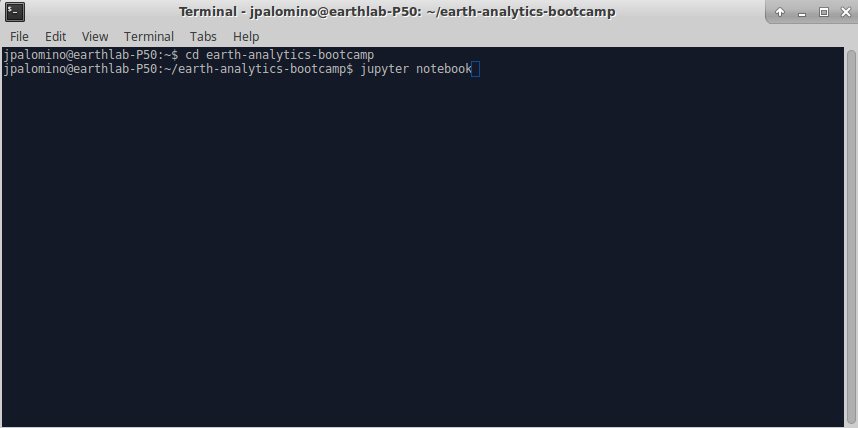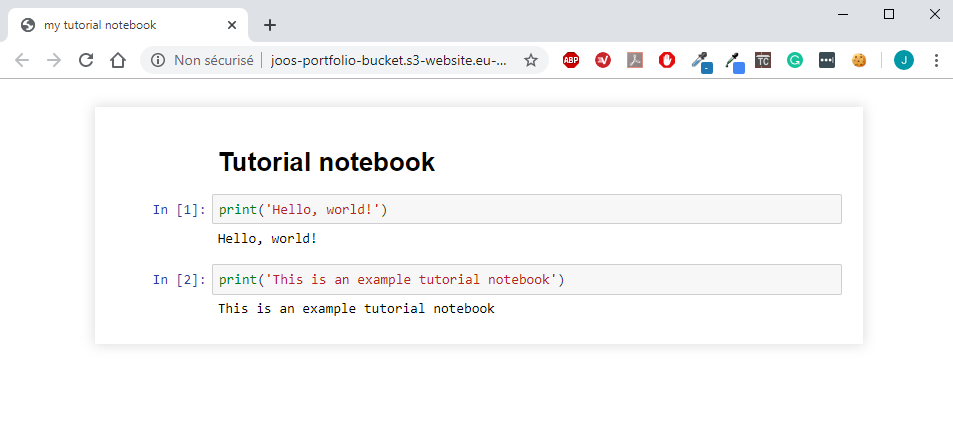

Jupyter notebook online editor code#
Interactively running and editing code in notebooks can delete key steps or introduce “hidden state” that confounds analyses and confuses readers. Yet, as with other computing environments, using notebooks for research requires special care. With some forethought, they can provide not only richly detailed descriptions of analyses but also interactive computing environments for replicating, exploring, and extending them. The interactive and narrative nature of computational notebooks presents unique opportunities for performing and sharing computational research. Jupyter Notebooks in particular have seen widespread adoption: as of December 2018, there were more than 3 million Jupyter Notebooks shared publicly on GitHub ( ), many of which document academic research. This ability to combine executable code and descriptive text in a single document has close ties to Knuth’s notion of “literate programming” and has convinced many researchers to switch to computational notebooks from other programming environments. Whereas analysts previously kept code, documentation, and results in separate files, they increasingly use computational notebooks such as Jupyter Notebooks and R Notebooks to both perform analyses and combine code, results, and descriptive text in a single “computational narrative” to be read and rerun by others. Achieving even this minimum standard typically requires both machine-readable descriptions of the data, software, dependencies, and computational environment involved (for example, hardware or cloud configuration), as well as human-readable documentation describing how all these pieces fit together. Reproducibility, the scientific standard that others should be able to recreate your results, requires at a minimum that “data and the computer code used to analyze data be made available to others”. We aim to augment this existing wellspring of advice by addressing the unique challenges and opportunities that arise when using computational notebooks, especially Jupyter Notebooks, for research. Numerous papers, including several in the Ten Simple Rules collection, have highlighted the need for robust and reproducible analyses in computational research, described the difficulty of achieving these standards, and enumerated best practices. The ability to explore the data, run commands, plot graphs and have all of these features in one document is the major reason for the widespread use of Jupyter notebooks.As studies grow in scale and complexity, it has become increasingly difficult to provide clear descriptions and open access to the methods and data needed to understand and reproduce computational research. Jupyter notebooks are the default medium data scientist use for their work and it’s for a good reason.

The evolution of Jupyter Notebook: Jupyter Lab. Jupyter Notebook is often used for exploratory data analysis and visualization. Jupyter Notebook (open source code), which began as the iPython Notebook project, is a development environment for writing and executing Python code. But the in-browser IDE is simply feature free, and hardly provides the same incredible editing power of Atom, VS Code, Sublime or even RStudio.

We love Jupyter Notebooks, the notebook format is an effective way to construct your data narrative. Jupyter Notebooks are Breathtakingly Featureless - Use Jupyter Lab. capture and visualize the scientific journey.conduct an experiment including the models.demonstrate the scientific model to someone.Jupyter notebook would be a good option in one of these cases and many more: › My Test For Millwood Hospital Arlington Texasįrequently Asked Questions Why to use Jupyter notebooks?.› Kansas Rural Water Association Training.


 0 kommentar(er)
0 kommentar(er)
